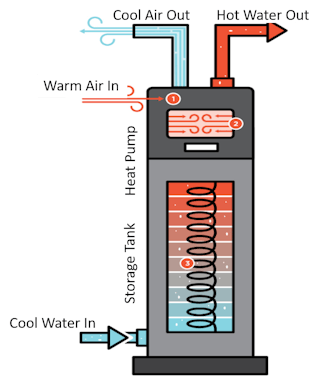All-electric appliances are available today to meet your cooking, heating, cooling, and clothes drying needs. They are safer and more efficient than their gas counterparts. You may already be familiar with electric resistance coils in cooking and water heating. Learn more about how all-electric appliances work by reading below or watching this Youtube playlist.
Induction Cooking

Induction cooktop uses electromagnetism to create heat inside the cooking pan, which in turn heats the food or water. Thus, cooking pans on an induction cooktop must be able to carry a magnetic field, which you can test with a simple magnet. Unlike gas stoves, the ceramic top remains cool while cooking.
Induction cooking can be done via individual cooktops or a traditional range. Cooktops can be plugged into standard electrical outlets and are an affordable option for all-electric cooking. Traditional ranges are more expensive and require a 240V appliance outlet.
To test how cooking on induction works, try out a free induction cooktop lender through PG&E and East Bay Community Energy today!
Heat Pump Water Heaters

A Heat Pump is a device that uses a small amount of energy to move heat from one location to another. It can be used for both space heating/cooling as well as water heating. Heat pumps are very efficient appliances; for every 1 unit of electric energy input, a heat pump produces 3 - 4 units of energy output. For water heating, heat pumps take warm outside air and transfer the heat to cool water to make hot water.
Heat Pump HVAC

Heat pump heat, ventilation, and air conditioning (HVAC) combines a furnace and air conditioning function into one system. In the summer, the heat pump can extract heat from outside air to push cool air in the home. In the winter, the heat pump takes heat from outside air to provide thermal comfort indoors, venting cool air outside.
Heat pump HVACs can have two different configurations: a ducted central system and a ductless mini-split system.
A ducted central system takes advantage of existing ducts to create one temperature zone throughout the building. Properly insulated ducts ensure that the heated/cooled air does not change temperature as it moves through the ducts.
A ductless mini-split system, on the other hand, does not require ducts but instead runs refrigerant lines through the walls. Multiple temperature zones can be created throughout the building with individual indoor units. Ductless systems are an option for buildings with baseboard/floor/wall heating and window air-conditioning.